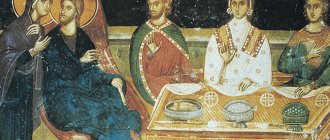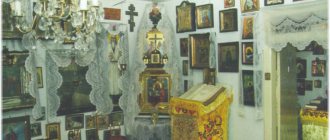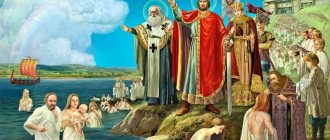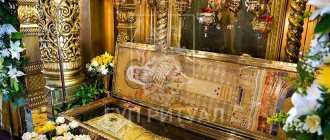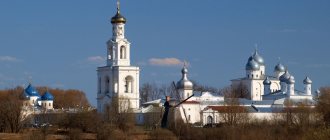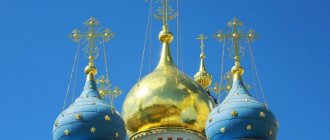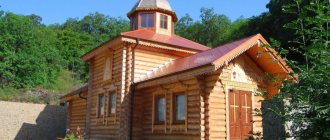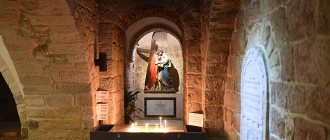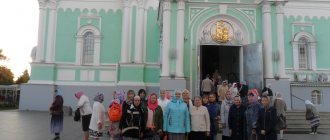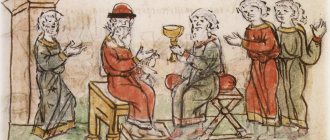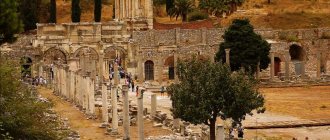Mir
Abkhazia Gudauta district Temple of the Apostle Simon the Canaanite (New Athos) Map is loading…
{"format":"leaflet","minzoom":false,"maxzoom":false,"limit":50,"offset":0,"link":"all","sort":[""], "order":[],"headers":"show","mainlabel":"","intro":"","outro":"","searchlabel":"\u2026 \u0441\u043b\u0435\ u0434\u0443\u044e\u0449\u0438\u0435 \u0440\u0435\u0437\u0443\u043b\u044c\u0442\u0430\u0442\u044b","default":"","import-annotation":false,"width ":"auto","height":"350px","centre":{"text":"","title":"""link":"""lat":43.09051600000000092904883786104619503021240234375,"lon": 40.81636900000000167665348271839320659637451171875,"icon":""},"title":"","label":"","icon":"","lines":[],"polygons":[],"circles":[ ],"rectangles":[],"copycoords":false,"static":false,"zoom":8,"defzoom":14,"layers":["OpenStreetMap"],"image layers":[] ,"overlays":[],"resizable":false,"fullscreen":true,"scrollwheelzoom":true,"cluster":false,"clustermaxzoom":9,"clusterzoomonclick":true,"clustermaxradius":80, "clusterspiderfy":true,"geojson":"","clicktarget":"","showtitle":true,"hidenamespace":false,"template":"","userparam":"","activeicon": "","pagelabel":false,"ajaxcoordproperty":"","ajaxquery":"","locations":[{"text":"\u003Cb\u003E\u003Ca href=\"/palomnik/%D0% A5%D1%80%D0%B0%D0%BC_%D0%B0%D0%BF%D0%BE%D1%81%D1%82%D0%BE%D0%BB%D0%B0_%D0%A1% D0%B8%D0%BC%D0%BE%D0%BD%D0%B0_%D0%9A%D0%B0%D0%BD%D0%B0%D0%BD%D0%B8%D1%82%D0% B0_(%D0%9D%D0%BE%D0%B2%D1%8B%D0%B9_%D0%90%D1%84%D0%BE%D0%BD)\» title=\»\u0425\u0440\ u0430\u043c \u0430\u043f\u043e\u0441\u0442\u043e\u043b\u0430 \u0421\u0438\u043c\u043e\u043d\u0430 \u041a\u0430\u043d\u0430\u 043d\u0438\u0442\u0430 (\u041d \u043e\u0432\u044b\u0439 \u0410\u0444\u043e\u043d)\»\u003E\u0425\u0440\u0430\u043c \u0430\u043f\u043e\u0441\u0442\u043e\u04 3b\u0430\u0421\u0438\ u043c\u043e\u043d\u0430 \u041a\u0430\u043d\u0430\u043d\u0438\u0442\u0430 (\u041d\u043e\u0432\u044b\u0439 \u0410\u0444\u043e\u 043d)\u003C/a\u003E\ u003C/b\u003E\u003Chr /\u003E\u003Ca href=\"/palomnik/%D0%A1%D0%B2%D0%BE%D0%B9%D1%81%D1%82%D0%B2%D0% BE:%D0%90%D0%BD%D0%BD%D0%BE%D1%82%D0%B0%D1%86%D0%B8%D1%8F\» title=\»\u0421\u0432\u043e \u0439\u0441\u0442\u0432\u043e:\u0410\u043d\u043d\u043e\u0442\u0430\u0446\u0438\u044f\»\u003E\u0410\u043d\u043d\u043e\u0442 \u0430\u0446\u0438\ u044f\u003C/a\u003E: \u0414\u0430\u0442\u0438\u0440\u043e\u0432\u0430\u043d IX\u2014X \u0432\u0435\u043a\u0430\u043c\u0438. 2007 2007 \u044e\u0447\u0435\u043d\u0430\ u0432 \u0441\u043f\u0438\u0441\u043e\u043a \u043d\u0435\u0434\u0432\u0438\u0436\u0438\u043c\u044b\u0445 \u043a\u0443\u043b\u 044c\u0442\u0443\u0440\u043d\ u044b\u0445 \u043f\u0430\u043c\u044f\u0442\u043d\u0438\u043a\u043e\u0432 \u043d\u0430\u0446\u0438\u043e\u043d\u0430\u043b\u0 44c\u043d\u043e\u0433\u043e\ u0437\u043d\u0430\u0447\u0435\u043d\u0438\u044f \u0413\u0440\u0443\u0437\u0438\u0438.","title":"\u0425\u0440\u0430\u043c \u0430\u 043f\u043e\ u0441\u0442\u043e\u043b\u0430 \u0421\u0438\u043c\u043e\u043d\u0430 \u041a\u0430\u043d\u0430\u043d\u0438\u0442\u0430 (\u041d\u 043e\u0432\u044b\u0439\u0410 \u0444\u043e\u043d)","link":"","lat":43.09051600000000092904883786104619503021240234375,"lon":40.81636900000000167665348271839320659 637451171875,"icon":""}],,"imageLayers":[]}
43.090615; 40.816509
Abkhazia, Gudauta district, New Athos, Eshba street, 8
Gudauta district
Abkhazia
Temple of the Apostle Simon the Canaanite
(abkh. Atsқya Simon Kntәi ihyyӡ zhu abaash; Georgian ს ტაძარი) is considered a unique example of ancient church architecture of Abkhazia, the formation of which was significantly influenced by the Byzantine style. Dated to the 9th-10th centuries. In 2007, the church was included in the list of immovable cultural monuments of national importance in Georgia. The temple is located in the valley of the Psyrtskhi River near the city of New Athos in Abkhazia, in the Gudauta region of the partially recognized Republic of Abkhazia, according to the administrative division of Georgia - in the Gudauta municipality of the Abkhaz Autonomous Republic.
History[edit]
The church is dedicated to Saint Simon the Canaanite, who, according to the Georgian chronicles of the 11th century, preached Christianity in Abkhazia and Colchis, died and was buried in the city of Nikopsia in northern Abkhazia. According to legend, the Apostle Simon the Canaanite spent two years in a nearby cave.
Church of Simon the Canaanite before reconstruction in 1882
According to the architectural style of the existing church, it can be attributed to the 9th or 10th century; it was influenced by Byzantine and Georgian artistic traditions. An earlier church is believed to have appeared on the site at least two centuries earlier. During the time of the Abkhazian kingdom, the church served as the Episcopal See and was the burial place of the clergy of the Sukhumi (Tskhumi) diocese. Until the end of the 19th century, under the southern gate there was a gravestone with the inscription in Greek “Mother of God, save George, the communicant of Tskhumsky” - the tombstone of Metropolitan George. In 1889, Bishop Gennady (Pavlinsky) of Sukhumi was buried here.
When Georgian historian Dmitry Bakradze visited the temple in the 1850s, the church was abandoned but still standing, except for the collapsed dome. The church was badly damaged when the local landowner, Major Hassan Margani, used stone blocks from its masonry to build his mansion. Later, in the 1880s, the church was reconstructed using blocks of white stone and acquired its current appearance. In 1882, Grand Duke Mikhail Nikolaevich visited the church.
The path of the Apostle Simon the Canaanite
By a happy coincidence, I spent several days in New Athos. Two meetings with interesting people made a great impression on me, and I would like to tell the readers of the Orthodoxy website about these people.
Cave of the Apostle Simon the Canaanite
I climb the stone path up the mountain to the cave of St. Simon the Canaanite, the apostle and baptist of Abkhazia. According to legend, the apostles Simon the Canaanite and Andrew the First-Called preached the gospel in the land of Iveron. Around the year 55 after the Nativity of Christ, Apostle Andrew went to preach further along the Black Sea coast of the Caucasus, and Apostle Simon settled in a hard-to-reach cave in the gorge of the Psyrtskhi River. He descended into this cave by rope through a small natural entrance.
The New Athos Monastery, founded in 1875 by Russian monks of the monastery of St. Panteleimon of the Holy Mountain, was named in honor of the apostle. In 1884, the monks consecrated the apostle’s cave with the blessing of water.
An artist, Zurab Achba, works on the bank of a mountain river. He is an Abkhaz, a native inhabitant of these places. Zurab paints landscapes of his native places and Christian monuments of Abkhazia on cardboard in oil. His paintings, colorful and kind, can be seen at exhibitions of the Union of Artists of Abkhazia; they are widely distributed in private collections in Russia, Turkey, the USA, and England. I look at the paintings and say with admiration to the artist:
– I really like your paintings, Zurab...
Artist Zurab Achba
He smiles back:
– You know, for me every picture is a prayer. Hymn to the Creator, Who created this beauty. He created this river Pstsyrtskha. I really like to write here, on the river bank, next to the holy place - the cave of the Apostle Simon the Canaanite. He helps everyone who comes here. Have a seat. Look how beautiful it is around! Write about me? It’s possible... But without pathos: I’m a small person... An artist? Anyone who does their job with love is probably an artist.
Zurab chose his profession as a child. His father was a winemaker. Once, famous guests came to visit my father. They looked at the hospitable house and the photographs on the walls. Everyone's attention was attracted by a photograph of grandfather and grandmother - stately, with a regal bearing, in folk costumes: the grandfather in a Circassian coat, with a silver dagger, the grandmother in a velvet dress with a high stand-up collar, long sleeves gathered at the wrist, and a silver belt.
Painting by Zurab Achba
Among the guests was an artist. He instantly copied the photograph so skillfully that he was able to use a pencil to convey the beauty and texture of the costumes and even the highlights on the silver dagger. Little Zurab gazed at the master’s work and was amazed by his art. The boy also decided to become an artist, and his determination only grew stronger over the years. The father tried to dissuade his son: “Who is an artist? Is this a profession? No decent girl will marry you! Become a winemaker like me!”
Zurab sighs:
– I hope that now my father is looking at me from heaven and he is pleased when my paintings please and comfort people...
I hear the bell ringing. I look around and see: golden domes, and above them there is only the sky
Several years ago, Zurab had a vivid dream: he was in a wonderful place, admired the sea, mountains from above and heard the ringing of bells. He looks around and sees: in front of him are golden domes, and above them there is only the sky.
I woke up impressed by the beauty of what I saw. I was getting ready to go to work, but it had just rained and it was too wet. Then he went to wander around the area. In search of a beautiful view, I climbed up the mountain to the New Athos Monastery, then even higher. I walked through places overgrown with greenery and was about to go down, but, drawn by some force, I walked a little further and descended onto a platform - a mountain terrace. I noticed a rock from which a tree grew, sat down to rest under it and heard a bell ringing. He parted the greenery of the bushes with his hands and saw a beautiful panorama from his dream: mountains, sea, golden domes of the monastery, and above them - only the sky. And he realized that his dream was prophetic.
For three years now, Zurab has been building his dream here: a house in which there will be an art school for children and a workshop for artists. He also provided a couple of guest rooms in the house. He dreams that familiar and unfamiliar fellow artists will come to this beautiful place. They, like Zurab, will go out onto the porch of the workshop and admire the beauty of nature.
Painting by Zurab Achba
Artists will be able to live here for free and delight their souls with the landscapes of Abkhazia, they will be able to share their experiences with each other and, perhaps, conduct a master class for the children whom Zurab will teach. And if, in gratitude for your hospitality, they give you their painting, then over time you will get a real gallery of modern painting!
Zurab is building his dream: a house in which there will be an art school for children and a workshop for artists
This dream house already has walls and a roof. And all the money that Zurab earns by selling his paintings, he invests in construction.
Zurab thinks for a minute, then says:
– I have one more dream. Someday they will restore the Church of the Holy Great Martyr Panteleimon in the New Athos Monastery. And real masters will come here - and for this we need artists of a very high level. Then I will become a drag for them. Didn't understand about the drag? Well, “bring and serve” - that’s what I want to do for them. And I will take part in the restoration of the marvelous frescoes of the monastery, just like “bring it.” And perhaps, if the Lord allows, under the guidance of real masters I will later be useful for my intended purpose - as an artist.
We say goodbye to Zurab. I really want to believe that the holy Apostle Simon the Canaanite will help his good dreams come true.
Valery Leonovich in the cave of the Apostle Simon the Canaanite
The path turns into stone, rather steep steps. I rise slowly and admire the surroundings. In the cave, about five pilgrims listen to an akathist read by a man standing in front of everyone. I join the prayer and notice that the reader does not use a book - he reads a long akathist by heart. After prayer we get to know each other.
Valery Leonovich has been coming to this holy place every day for eleven years: in summer and winter, in rain and in bad weather. Here he is a janitor, a watchman, a tour guide, and a preacher. He does not labor on his own, but with the blessing of the priest.
– Valery Leonovich, how did you end up here?
– I was seriously ill: rheumatoid arthritis. All my joints hurt. During the four years of my illness I was in the hospital several times, but treatment did not help me. He could hardly walk on crutches. They brought me by the arms to this holy place - practically brought me.
Saint Simon the Canaanite healed me!
And now I can go up and down these steep steps three times a day - Saint Simon the Canaanite healed me! Here you are - how did you get up? With difficulty, right? And I get up and feel great. But I’m almost sixty!
– Tell us a little about yourself for the readers of the Pravoslavie.ru website...
- What can I tell you? My mother was Russian - a Kuban Cossack, on my father’s side - Greeks, Armenians... my ancestors have lived in Abkhazia since 1870...
I was healed - and still continue to come here every day. I can't live without it anymore. I'm drawn here. I’ll pray – it becomes easier. I pray, I save myself... Now this is an integral part of my life. Without prayer, I would have been lost in the world... Saint Simon the Canaanite became close and dear to me.
And Valery Leonovich continues:
- Previously, this stone path did not exist - they crawled into the cave on all fours... Every day I read an akathist to the saint. Of course, by heart - for so many years and several times a day... I also know by heart “Glory to God for everything,” the akathist to the Iveron Icon of the Most Holy Theotokos, the image “Helper of Sinners”... I also read often... How... I am a repentant sinner, how can I not pray to the Helper of Sinners?!
I also read to other saints, but not by heart. I had a grief here. I had a good Akathist like this – with capital letters. I see it's pretty bad. A large group of pilgrims arrived. We prayed. They left me notes. I pray for everyone who asks. I remember it every day. For health, for peace... We left - I saw: my beloved Akathist was gone. It was already so old, I glued it together with tape. And then he disappeared. There was such sorrow... Well, okay... “Thank God for everything” he sang...
Cave of the Apostle Simon the Canaanite
– Valery Leonovich, have you witnessed the healings of other people?
- Certainly! One married couple had no children for six years. We prayed with them to Saint Simon. They then come and show me the child. They're crying. The holy apostle heals many from infertility. A man was recently cured of leukemia. Someone is healed - and returns to thank. But some don't. Like in the Gospel. Ten were healed, one returned with gratitude. Where is nine?
Valery thoughtfully adds:
The prayer of a saint can do a lot... And the Lord also hears our prayer as sinners. The main thing is that she is diligent
– The prayer of a saint can do a lot... And the Lord also hears our prayer of sinners. The main thing is how diligent she is... You must be able to pray fervently... To delve into it, to understand what you are reading. So as not to rattle off mechanically... Many miracles happen here - the place is holy. Sometimes stars light up during the day. Have you seen the saint’s foot imprinted on a stone?
- Certainly…
- That too - such a miracle! When they did not believe the saint’s sermon, he stamped his foot - and the footprint of his foot was imprinted on the granite boulder. The pagans saw the mark on the stone - and realized that this man of God was not of this world. He is the paternal half-brother of the Lord himself! Apostle... In two years, through his prayers, two Abkhaz families came to God. Ancestors of the ancient Abkhazians. And Saint Simon the Canaanite baptized them. Then he accepted martyrdom - like almost all the apostles. He was ready for it. Red spots are still visible on the stones near the grotto - “drops of the apostolic blood.” The holy spring swelled. Whoever drinks water from this source will return here again. It will drag. Abkhazia - Apsny - the country of the soul. Sorry, I can’t talk anymore - I need to pray.
Through the prayers of the holy Apostle Simon the Canaanite, Lord Jesus Christ, our God, have mercy on us!
Description[edit]
The Church of Simon the Canaanite is a three-apse cross-domed temple. The original porches are now lost. Previously, the walls were plastered on the inside and painted with frescoes (not preserved). The church is decorated with images of Christian symbols such as fish, lion and cross, made in the form of reliefs.
Pilgrim and antiquities researcher A.P. Muravyov, who visited the church in the first half of the 19th century, left the following description:
Historical tradition points to this church as the burial place of St. Apostle, located in a fairly vast clearing, washed by the waves of the Psyrtskhi River. The wild, picturesque place seems to have been deliberately created by nature to lure people to live. In the middle of the clearing there is a small church, but almost completely intact, except for the collapsed dome; its western porch is littered with stones and overgrown with wild plants, like the very top of the church, the entrance is from the southern porch, above which the half-erased face of the Savior is visible. The structure of the temple is Greek, with a triple division of the altar, and a semicircle of the high place. The thinness of the walls and the height of the slender vaults, which rest on extremely light pillars, are amazing; the painting has already been erased, but on the western wall the Assumption of the Mother of God and two martyrs are still visible.
Another traveler, who was in the temple at about the same time, described it this way:
The church has the shape of a quadrangle; on the western side there is a special aisle with a strong surviving vault, on the right side of the aisle there is a passage into the dungeon, covered with earth and rubble. The southern, northern and western doors are covered with porticoes with stone vaults; the walls are made of white-grayish strong wild stone, cleanly hewn, with patterned ancient cornices; the masonry is of remarkable strength; although the dome and roof have long since collapsed, the walls are still strong; Inside, the plaster shows the remains of ancient fresco painting: the image of some saint, a young maiden crowned with a royal crown, the image of some martyr similar to St. George, above the western doors, the image of the Dormition of the Blessed Virgin Mary has been preserved quite clearly; in the chapel on the right side, an image of three saints, less preserved; their vestments are made of brocade decorated with crosses, and St. Basil the Great - chess of white and black squares. The western wall and the altar were overgrown with laurel and fig trees, picturesquely stretching along the inner walls to the ground. It is wonderful that these trees bear fruit every year.
Is it possible to get inside?
Unfortunately, the temple is currently closed for restoration. Given the church schism in Abkhazia that has existed since 2011, it nevertheless belongs specifically to the Abkhazian Orthodox Church, and not to the schismatics who took control of the New Athos Monastery. Let's hope that all the confusion and proceedings will subside, but for now you can go around this wonderful temple, and behind, in the outer niche in its wall in the area of the altar, put a candle with a request to the great Saint Simon for his prayerful help for your family.
Cave as a refuge
Simon the Canaanite simply could not have been a disciple of Christ if he had not recognized God in this.
It is very strange, but it is difficult to be in danger in Abkhazia. Most likely, the grotto itself should be considered a refuge, and not a refuge, because it is really calm there. It is difficult to persuade the keepers to stay in the cave later when no one is there. They strive to see tourists out at the right time, but for some they make exceptions and allow them to be alone in the cave.
Immediately from there return to Gagra - closer to the sea, along the street with eucalyptus trees. Then you will see for yourself that Abkhazia is one of the safest places on Earth.
How to get there?
You need to move from the center of the village of New Athos towards Psyrtskha station.
To where the waterfall is. There is also a three-apse cross-domed temple of Simon the Zealot. From there we move along the river. There are baths for pilgrims on the shore. They do not bathe in the river in the usual sense, but perform ablutions. The entrance to the gorge area where the grotto is located is quite noticeable. It is paid, but inexpensive. The money goes towards maintaining the place. There are 200 steps leading to the cave entrance. For sick or elderly people, the climb can be quite difficult. The apostle himself made his way into the cave through the entrance from above, but in the 19th century a passage was cut into the rock. Now people enter the cave through it.
On the way, near the Psyrtskha River, there is the already mentioned stone with the footprint of the apostle. A cross is visible on the opposite bank. According to legend, this is the place of execution. Various things are said about her. Some say that the saint was cut with a saw, others say he was beheaded with a sword, but there is also a version of crucifixion.
Video
How to get to the temple
If you are vacationing in Abkhazia itself or on the Russian Black Sea coast of the Caucasus, then getting to New Athos is very easy. In Sochi or Adler you can buy a sightseeing tour that includes a visit to the New Athos cave, monastery, grotto of Simon the Zealot and his temple . If you want to see these sights in one day and are traveling to Abkhazia for the first time, then I highly recommend this simplest and most interesting option. When crossing the border, you only need your Russian passport.
If you like to explore this world as much as I do, outside the framework of excursions and crowded companies, then you can visit this wonderful resort town on your own. From Adler to New Athos it is just over 90 km. In your car from Adler you drive to the border checkpoint near the Psou River, and then, after passing through it, you simply drive along the Sukhumi highway,
overlooking beautiful natural views along the way.
If you don’t have a car, then you can get from Adler to the border by buses 125 and 125C, as well as minibuses 100 and 125 to the Cossack Market. Cross the border (if you have questions about the location of the checkpoint, remember the saying about “the language that gets you through”, contact one of the locals, anyone will guide you).
On the Abkhaz side, a lot of minibuses, private passengers and regular buses . I would choose the latter - the most reliable on Abkhaz roads. Since the driving style of the local population, in my opinion, is somewhat choleric, and you can’t argue with a big Icarus. Well, a minibus (150 rubles) is also quite suitable. Private owners can charge a very high price (more than 1000), and I just hinted about the temperament of local drivers. But if you love expensive extreme sports, then you can take a risk. The direction of travel is always written on the windshield of buses and minibuses, so just look for the “New Athos” sign. The town is very small, and when you get off in New Athos at the “Battle Glory Square” stop, you will only have to ask how to get to the temple, as well as how to get to other New Athos attractions,
which are a must-see for the inquisitive eye of a true traveler!
Architecture Features
The structure can be described as a small three-apse temple of a cross-domed type. White limestone stone was used for the construction. Initially, the walls were painted with frescoes, but time has not been kind to them. The inscriptions in Greek, made in the medieval era, are perfectly preserved. Sayings are carved on the façade above the entrance.
What history is silent about
The historical cross-section of that time itself cannot be described in relation to this country. There is no clear historiographical data about the events taking place then. According to legend, the Canaanite lived in a cell that he found in Abkhazia in the period 53-55 AD, but even this information will always refer to some other information.
The role of Simon the Canaanite as the baptist of Abkhazia also remains in doubt. The Psyrtskha River flows near the rock where the grotto is located. It is peaceful, flat and at the same time mountainous. There are still rapids along the current. There is also a stone on which the guide will point out some changes in the rock, which are historically considered the “imprint” of the apostle’s foot. These are some characteristic indentations. What's the footprint there? And why this size? Nobody will answer these questions.
History of construction
The construction of the church took place at the turn of the 9th – 10th centuries. In those days, Anakopia flourished; it was here that the political and spiritual life of the country was in full swing. It was at this time that Orthodox culture flourished in Abkhazia, and the construction of churches was actively underway.
Simon the Canaanite arrived on the Black Sea coast of the Caucasus in 55 AD. e. together with Andrew the First-Called, who subsequently went on a journey and reached Valaam. Simon remained in Abkhazia to bring the Word of God to people. It is not known for certain whether the apostle is really buried here; there are different versions. But what we can say for sure is that the temple is located here as a monument to the first acquaintance of the Abkhaz land with emerging Christianity.
Over the many centuries of its existence, the building was subjected to barbaric attacks, looting and destruction. Then the temple was restored, restored and again suffered destructive attacks. As a result, it no longer looks the way it was originally intended. Its walls became higher, they were painted white, and the architecture was supplemented with new decorative elements.
At the end of the 19th century, by order of Alexander III, the temple was transferred to the New Athos Monastery, and in 1882 it began to fulfill its duties; services, baptisms and other holy rites began to be held here.
